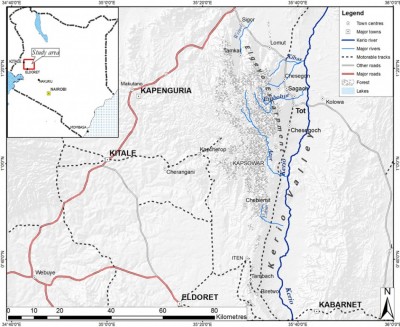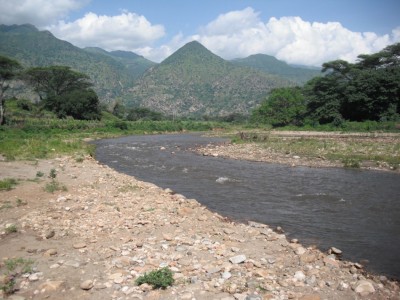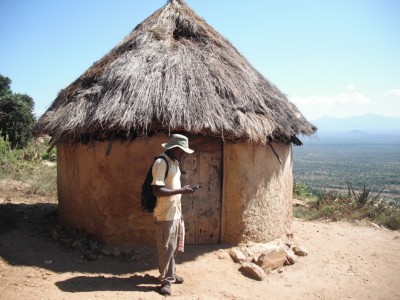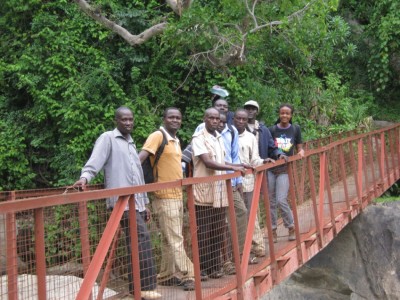Mobile internet technologies and the possibilities for public archaeology in Africa: Marakwet, Kenya
At the dawn of the twenty-first century, public and community archaeologies are not only a disciplinary obligation but increasingly inform ethical and intellectually effective forms of practice (e.g. Schadla-Hall 1999; Merriman 2004; Matsuda & Okamura 2011). Recently a number of writers have noted the possibilities of using internet technologies and social media to reach broader audiences and to foster community engagement (Kansa et al. 2011; Bonacchi 2012; Richardson 2013). These writers have analysed and critiqued social media and web-based communication, however they have primarily focused on the potential of single platforms (e.g. Facebook, Twitter) or considered the broad potential of social media in only general terms (Glynn 2013). Many projects have developed internet resources to disseminate research results and archive project data (e.g. the Archaeology Data Service or the Çatalhöyük project), however few have successfully used internet technologies actively to engage local communities in a dialectical research process and thus develop true community-led research agendas (for an exception, see the Levi Jordan Plantation project). Nor, as far as we are aware, has archaeology yet explored the potential to utilise online communities as a means of generating research data as has been achieved by the Citizen Science Alliance.
While this brief review demonstrates the growing, if yet imperfectly realised, potential of internet and social media in Euro-American archaeology, the impact of these technologies for the communication of academic research in the developing world seems more revolutionary. For example, in Kenya social media and mobile internet technologies are developing exponentially. Regions that previously lacked landline telephones, television and regular print media now have mobile phone and 3G internet signals. Internet-enabled smartphones are becoming more affordable and accessible and Kenyans across remote rural areas are more connected than ever. Mobile technologies allow access to news and direct engagement with political processes via social-media-savvy news corporations (Banda 2010; Odinga 2013). Mobile technologies are increasingly used in unique and creative ways, such as the M-PESA cell-phone enabled banking system (Mas & Radcliffe 2011).
The success of mobile technologies in eastern Africa hints at new possibilities for African public archaeology with the development of effective public input seemingly essential to transform the discipline into a truly post-colonial endeavour (Lane & Mapunda 2004). Although outreach strategies are promoted by many regional museums (Kusimba & Klehm 2013), most populations have a limited understanding of archaeology and its potential uses in the present (Lane 2011). Archaeological and cognate research projects, however, could be greatly enhanced by community input and data collection and, in that context, the widespread use of smartphones and mobile internet in eastern Africa can promote engagement, participation, education and feedback.
The Marakwet Community Heritage Mapping Project
Research in Marakwet in north-west Kenya has trained a local team to use a range of mobile technologies in order to map the physical and social landscape of the community (Figures 1 & 2). The team use hand-held GPS, digital photography, audio-recording and written notebooks to collect data on pre-colonial irrigation, field systems, cropping, oral histories and ‘special places’ (ceremonial and oral historical sites) and to conduct baseline archaeological survey (Figure 3). To date, the local team have collected over 400 GPS tracks, 3000 points of interest, 140 audio-recorded interviews, 5000 geo-referenced photographs and 40 archaeological sites (Figure 4).
Working independently for several months at a time, the team utilises the rapidly improving mobile internet network to send results to UK-based project leaders where they are processed and incorporated into the GIS archive. Mobile internet is also used to plan research agendas (via email/Skype), producing a fluid adaptive research strategy. The team are supported financially and instantly via the M-PESA mobile banking system. Over the coming years the project will develop its use of mobile technologies, trialling smartphones and tablets for data collection, making use of integrated GPS, camera, dictaphone and note-taking features. Project data will be synchronised across devices via the internet and/or a local area network allowing for flexible working and the seamless collection and collation of data.
Data collection will be backed up by a multi-layered ‘living’ project archive. This will comprise a ‘back-end’ database for raw research data and a ‘front-end’ interface making data publicly available. The interface will allow access to data generated by the current project alongside a back catalogue of previously conducted research reports and archival material from the last century. The archive will allow us to feed back research to the community so they are able to utilise these resources for their own aims and ambitions for the future. Most innovatively, we envisage the archive not as a post hoc static record and repository for research conducted, but rather as an ongoing hub for the collection and dissemination of community information beyond the duration of our own academic-led research. We further aim to work with developers to create a mobile application to allow community members across the spectrum and beyond the research team to comment on and discuss archive material and upload their own related material, histories, stories and sites of significance. Linked social media platforms (Facebook, Twitter, Wikipedia) will be used to increase public awareness and generate input and feedback. We hope not only to engender public involvement but also to move beyond this by providing a platform through which the community can generate, discuss and make use of its own historical and archaeological resources.
Acknowledgements
We would like to thank the Marakwet Research Team and the community of Tot-Sibou village, alongside the Kenyan National Research Council, the National Museums of Kenya, the British Institute in Eastern Africa, the McDonald Institute and all who have participated.
References
- BANDA, F. 2010. Citizen journalism and democracy in Africa: an exploratory story. Grahamstown: Highway Africa.
- BONACCHI, C. (ed). 2012. Archaeology and digital communication: towards strategies of public engagement. London: Archetype.
- GLYNN, L. 2013. @Syon2013: power to the people—new models for public engagement in archaeology using social media #engagement #archaeology #MoLSyon2013. Unpublished MA dissertation, University College London.
- KANSA, E.C., S.W. KANSA & E. WATRALL. 2011. Archaeology 2.0: new approaches to communication and collaboration. Los Angeles (CA): Cotsen Institute of Archaeology.
- KUSIMBA, C. & C. KLEHM. 2013. Museums and public archaeology in Africa, in P. Mitchell & P.J. Lane (ed.) The Oxford handbook of African archaeology: 227–37. Oxford: Oxford University Press.
- LANE, P.J. 2011. Possibilities for a postcolonial archaeology in sub-Saharan Africa: indigenous and useable pasts. World Archaeology 43: 7–25. http://dx.doi.org/10.1080/00438243.2011.544886
- LANE, P.J. & B. MAPUNDA. 2004. Archaeology for whose interest—archaeologists or the locals?, in N. Merriman (ed.) Public archaeology: 211–23. London: Routledge.
- MAS, I. & D. RADCLIFFE. 2011. Mobile payments go viral: M-PESA in Kenya. Capco Institute’s Journal of Financial Transformation 32: 69–182.
- MATSUDA, A. & K. OKAMURA (ed). 2011. New perspectives in global public archaeology. New York: Springer.
- MERRIMAN, N. 2004. Public archaeology. London: Routledge.
- ODINGA, C. 2013. Use of new media during the Kenya elections. Unpublished MA dissertation, University of Uppsala.
- RICHARDSON, L. 2013. A digital public archaeology? Papers from the Institute of Archaeology 23: 1–12. http://dx.doi.org/10.5334/pia.431
- SCHADLA-HALL, R.T. 1999. Public archaeology. European Journal of Archaeology 2: 152–58. http://dx.doi.org/10.1179/eja.1999.2.2.147
Authors
- Matthew Davies
McDonald Institute for Archaeological Research, Cambridge University, Downing Street, Cambridge, CB2 3ER, UK (Email: md564@cam.ac.uk) - Agathe Dupeyron
The British Institute in Eastern Africa (BIEA), PO Box 30710 – 00100 GPO, Nairobi, Kenya (Email: agathe.dupeyron.12@alumni.ucl.ac.uk) - Henrietta L. Moore
Department of Archaeology and Anthropology, Division of Social Anthropology, Cambridge University, Free School Lane, Cambridge CB2 3RF, UK (Email: hlm10@cam.ac.uk)





 Cite this article
Cite this article